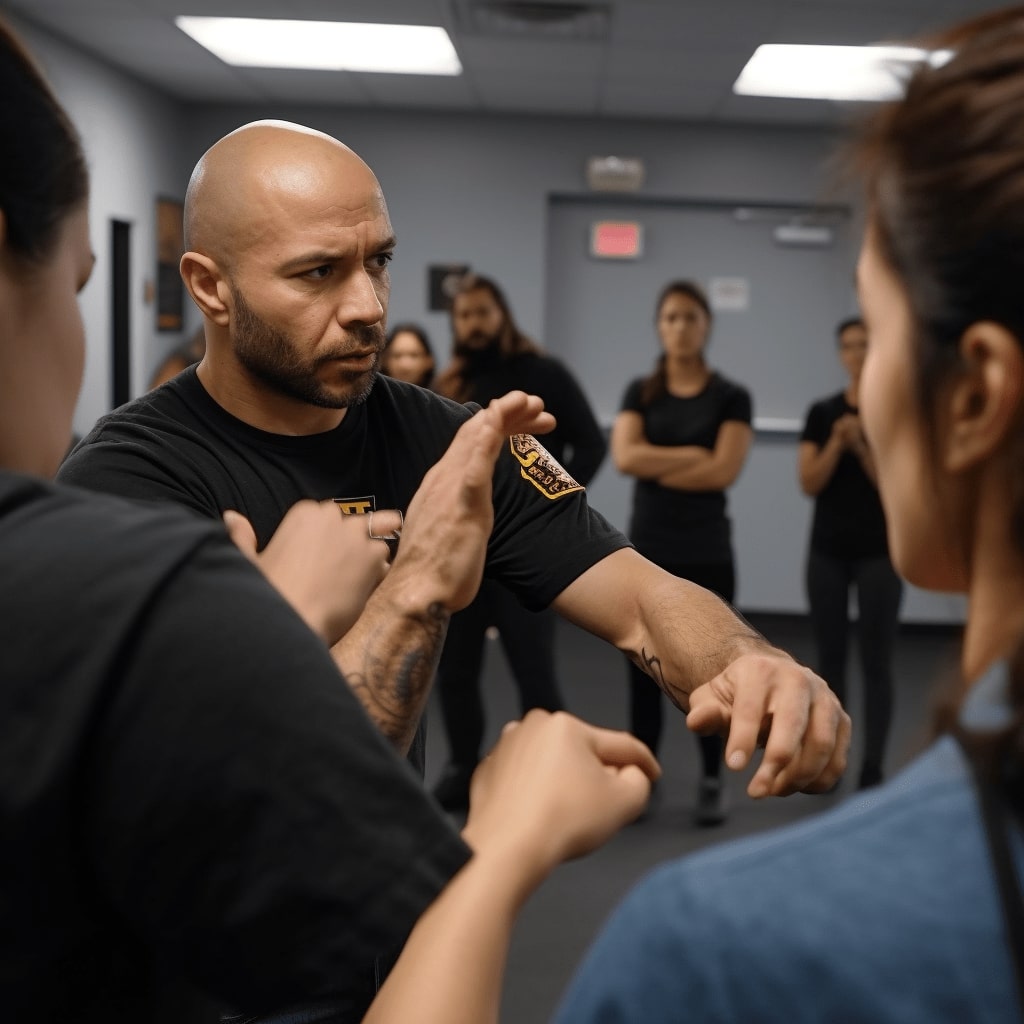Understanding the Importance of Breaking the Ice
Breaking the ice is a vital aspect of initiating conversations with strangers. This initial step serves several purposes, from delivering a good first impression to paving the way for a deeper connection.
The First Impression Counts
In most cases, the first few minutes in any interaction can dramatically impact the entire course of your relationships.
By breaking the ice, you take control of those crucial early moments. It allows you to present yourself positively and confidently, which could significantly influence the stranger’s perception of you.
Moreover, it gives you an opportunity to showcase your communication skills and demonstrate your willingness to engage in meaningful dialogues.
Facilitates Open Communication
An effective ice breaker removes barriers to communication. By initiating a conversation and introducing a topic that sparks shared interest, you eliminate the awkward silence and fill the air with meaningful discourse. It creates an atmosphere where both parties feel more comfortable expressing their thoughts and opinions openly. This open dialogue can quickly build rapport, leading to a more fruitful interaction.
Lays Foundations for Deeper Connections
Breaking the ice is also essential in establishing connections on a deeper level. It allows you to learn about the other person beyond their surface-level characteristics, further helping you understand their personality, perspectives, and experiences. These initial interactions can lay the groundwork for potential friendships, partnerships, or collaborations in the future. Therefore, mastering the art of breaking the ice can open doors to various opportunities and create lasting relationships.
Effective Approaches to Initiate a Conversation with a Stranger
Understand the Importance of Body Language
The first thing to consider when initiating a conversation with a stranger is your body language. Your nonverbal cues can significantly impact how your approach is perceived. A relaxed posture, genuine smile, and direct eye contact can establish a sense of trust and openness. Remember to respect personal space and avoid any gestures or expressions that might come off as imposing or aggressive.
Mastery of the Art of Small Talk
Small talk serves as an ice-breaker and allows you to transition into more meaningful topics smoothly. Some good starting points might be the weather, local events, or shared experiences. For instance, if you’re at a public event or a festival, comment on the crowd, atmosphere, or a specific highlight of the event. Compliments can also work as conversation starters, given they are sincere and relevant. But remember, the key to successful small talk is listening attentively to the other person’s responses and showing genuine interest in getting to know them.
Ask Open-Ended Questions
Open-ended questions promote a deeper level of interaction and boost the flow of the conversation. Asking such questions encourages more than just yes or no answers, allowing the other person to share more about their experiences, opinions, and feelings. Frame your questions in a way that they reflect curiosity and a keen desire to understand the other person’s perspective.
Acknowledge Common Interests or Values
Finding common ground can make the stranger feel more comfortable and open up more easily. It could be anything from a shared passion for a particular kind of music, a mutual interest in a sport, or even parallel viewpoints about a specific topic. Not only does this create a bond, but it also provides potential topics for future conversations.
Remember, initiating a conversation with a stranger is not about impressing them, but more about expressing genuine interest in them and making connections. Always respect the other person’s comfort level and privacy, and be ready to gracefully exit the conversation if they appear uninterested or uncomfortable.
Useful Tips for Keeping the Conversation Flowing
Master Active Listening
Active listening is more than just hearing the words that are being spoken. It involves understanding, responding, and then remembering what’s being said. You can employ various techniques to show that you are actively engaged: nodding your head, maintaining eye contact, and asking thoughtful questions at appropriate times. Paraphrasing and summarizing what the other person has said is also a valuable tactic, so they know you are actually understanding and following the conversation. By doing this, you’ll make the other person feel heard and valued, potentially inspiring them to share more with you.
Make Use of Open-Ended Questions
Open-ended questions cannot be answered with a simple ‘yes’ or ‘no’. They require more thought and more than a one-word answer. Using open-ended questions in your discussion can lead to a deeper conversation. For example, instead of asking, “Did you like the movie?”, which can be answered with a simple yes or no, ask something like, “What did you like about the movie?” or “How do you think the protagonist evolved throughout the movie?”. Not only does this prolong the conversation, but it also gives you a chance to understand the other person’s perspective better.
Use Empathy and Genuine Interest
Showing empathy in your conversations means trying to understand and share the feelings of the other person. Also, exhibiting genuine curiosity about what they are saying always helps to keep the conversation flowing. Expressing interest encourages others to share more about their experiences and opinions, and these shared stories can form a connection between you, leading to a more engaging and meaningful conversation.
Remember, the key to mastering conversation skills is practice. The more you engage in conversations, especially with strangers, the more comfortable and skilled you become. Use these tips consistently, and soon you’ll develop the knack for keeping discussions lively and engaging.
Common Mistakes to Avoid When Starting Conversations with Strangers
Initiating Conversation Without Context
One of the most common mistakes when starting a conversation with a stranger is initiating it without any relevant context. This might make the other person uncomfortable or confused as they might not understand the purpose of your approach. For example, randomly asking a stranger about their favorite color might seem out of place and awkward. Instead, look for a common thread or situational prompt that can naturally lead the conversation.
Misusing Open-ended Questions
While open-ended questions are usually recommended for initiating conversations, using them incorrectly can steer the conversation into a dead-end. Asking too broad or too complex questions can overwhelm the respondent, making them less likely to engage in the conversation. Furthermore, asking personal or sensitive questions right off the bat can make the other person defensive. Opt for simple, non-personal questions at first that allow the other person to respond freely without feeling invaded.
Ignoring Nonverbal Cues
Neglecting to pay attention to nonverbal cues is another common mistake. Nonverbal communication, such as body language, facial expressions, and tone of voice, often conveys more than verbal communication. Ignoring these signals might result in misreading the situation or the other person’s comfort level. For instance, if a person seems busy or uninterested, it may not be the best time to initiate a conversation. Make sure to consider nonverbal cues along with the verbal ones for a successful interaction.
The Role of Non-Verbal Communication in Breaking the Ice
The Power of Body Language
Non-verbal communication, particularly body language, plays a pivotal role in breaking the ice before beginning a conversation with strangers. Human beings instinctively read and interpret body signals, whether consciously or unconsciously. It is vital to ensure your body language communicates openness and approachability, which can be achieved through maintaining eye contact, offering a warm smile, or keeping your body posture relaxed and open. These actions can make you appear more approachable and instill a sense of comfort and trust in the person you wish to converse with.
Conveying Intent through Nonverbal Cues
Non-verbal cues are not just limited to facial expressions or body postures; they also incorporate elements like tone and volume of voice, the pacing of speech, and the space maintained during interaction. When initiating conversations with strangers, it’s crucial to modulate your voice in a way that conveys friendliness and interest, while making sure it is not too loud or too soft. Similarly, pacing your speech can show your attentiveness and respect for the other person. Observing personal space also plays a part in showing respect and making the other person feel comfortable.
Impact of Micro-Expressions in First Impressions
Micro-expressions are subtle, brief facial expressions that occur involuntarily, reflecting a person’s genuine emotions. Mastering the art of recognizing these micro-expressions can provide valuable insights about how the other person is feeling. These cues can reveal if the person is genuinely interested, bored, uncomfortable, or defensive. Recognizing these expressions early on can help you adjust your approach accordingly, thus enhancing the chances of successfully initiating and maintaining a conversation.


